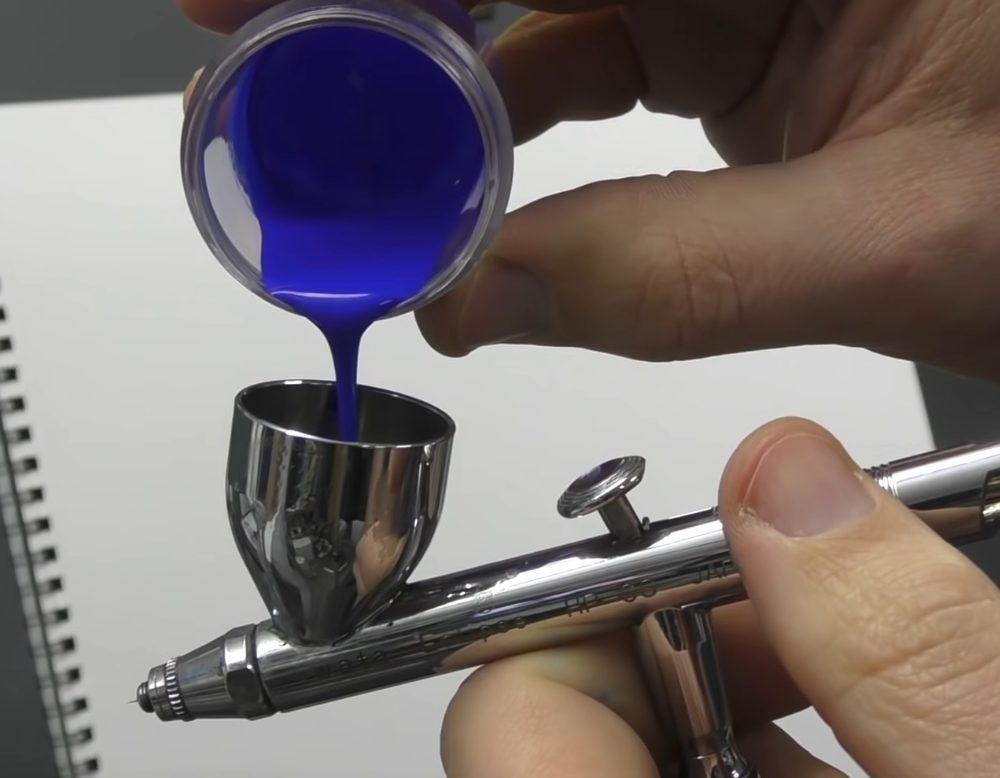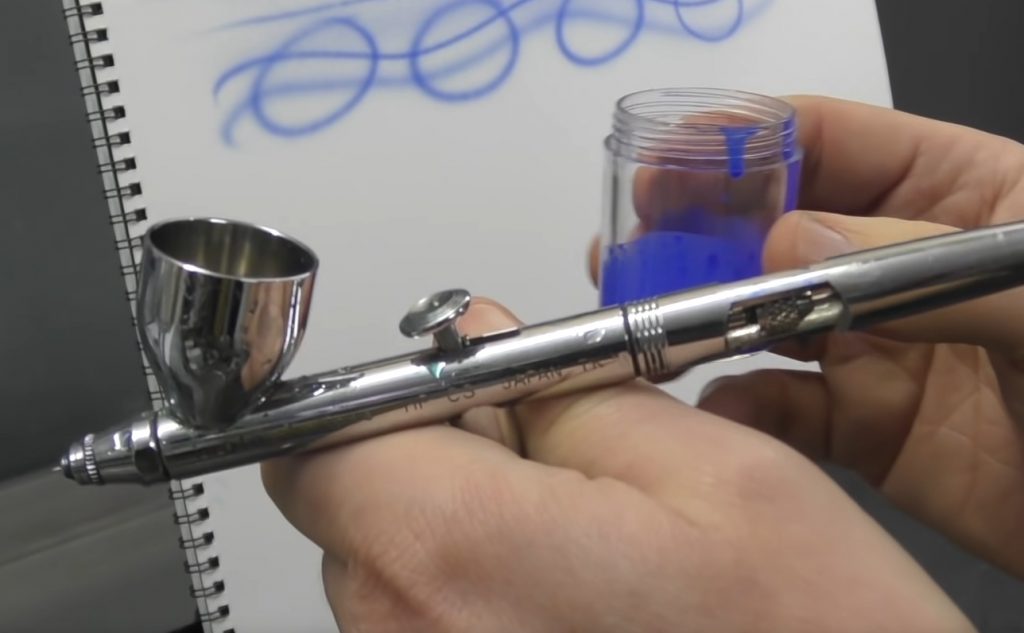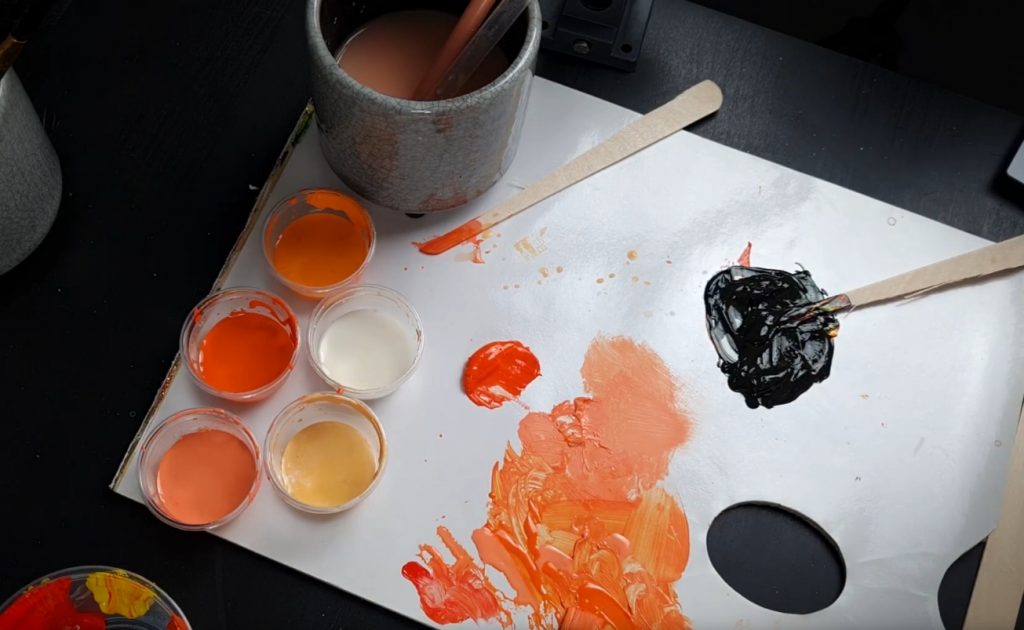
Thin enamel paint is a critical factor in how to airbrush enamel. The right consistency will help you create smooth, even coats that look great and last long. In this guide, we’ll walk you through the steps of how to thin enamel paint for airbrush use. We’ll also give you some tips on how to get the best results!
Are Enamel Paints Usable in an Airbrush?
To use enamel paints in an airbrush, you must first dilute the paint. When using enamel paints in an airbrush, the most essential thing to remember is to clean out your airbrush entirely after use.
You risk clogs and an uneven spray pattern if you don’t thin the enamel paint to the proper consistency with an airbrush before using it.
Thinning Enamel Paint Before Application
Enamel paint is a type of paint that has a hard finish and is glossy. Enamels are best suited for providing a brilliant, long-lasting finish after curing. The components used to make enamel paint result in their gleaming texture. However, if the ingredients in the mixture have not been thinned out sufficiently, working with an airbrush can be problematic.
The consistency of enamel paint may differ from brand to brand, but in general, you’ll need to thin it before using it in an airbrush. You will achieve a consistent, smooth spray of paint by thinning the enamel paint.
Thin your enamel paint to the same consistency as milk if possible. This is a good starting point because it will provide you with a solid foundation. There’s a chance that you’ll have to thin down your enamel paint further, depending on the spray pattern you want and how effective your specific airbrush is.
Before utilizing an airbrush on your project, we strongly advise that you test your enamel paint on a separate surface comparable to the one on which you’ll be working. Thinning enamel paint on a plate or a tiny cup is suggested.

Cleaning Is Vital After Spraying Enamels
You will need to clean your airbrush after each use, but it is especially critical that you do so once you’ve finished working with enamels. You must clear out your airbrush as soon as you have completed your project.
Enamel, in particular, is not one of these paints. While various paints may be less fragile if allowed to dry in an airbrush, the enamel is not one of them. Enamel paints are made to be long-lasting, so allowing this paint to dry in your airbrush will most likely render your airbrush unusable.
As a result, as soon as you’ve finished using your enamel paint in an airbrush, clean the airbrush out as quickly as possible. You’ll also want to make sure you’re using the proper cleaning solutions to preserve your airbrush from getting damaged.

Safety and Protective Gear
Enamel paints are highly toxic, especially when they are solvent-based. As a result, when you use enamel paint with your airbrush, make sure you work in a well-ventilated space. Ensure that you’re wearing a respirator that’s been certified for use with an airbrush while spraying the airbrush.
When you use enamel paints, it’s critical to take specific measures to avoid harming your health by breathing in the fumes produced by the color.
It’s critical to use the appropriate protective gear when working with an airbrush, especially if you’re using enamel paint. You should also wear a respirator, goggles, and gloves to protect yourself from harm while working in a well-ventilated area.
FAQs about Thin Enamel Paint for Airbrush
What Should I Thin Enamel Paint With?
You may use mineral spirits or white spirits to reduce or thin enamel paints. You may also utilize manufactured thinning chemicals, a mix of unique mineral spirits, and other substances.
How Do Enamel and Acrylic Paints Differ?
Acrylic paints are water-based and will dry to a matte finish, whereas enamel paints have a glossy finish and are solvent-based. Acrylic paints are used for interior decorative items, whereas enamel paints are used for outdoor decor. Enamel paintings are more durable and take longer to dry than acrylic paintings.
What is the Best Thinner to Enamel Paint Ratio?
Three parts paint to one part thinner (3:1) is the suggested ratio, or anything similar. The proportion of paint should always be more significant than that of the thinner; if there is too much thinner, the paint will become too narrow and thus suffer color fading and lack of adhesion.
Conclusion
You may use enamel paints with an airbrush, but you’ll need to thin the paint out first because this is essential for achieving the proper consistency. You will avoid any clogging of your airbrush and obtain a consistent spray by thinning the enamel paint properly. To reduce the thickness of your enamel paint, use the specified thinner and follow the manufacturer’s recommendations carefully before beginning to thin it.
Hi, I have a question, how much thinner do I add to enamel paint?
The amount of thinner you add to enamel paint depends on the type of enamel paint you are using and the desired consistency. Most enamel paints already contain a small amount of thinner, so you may not need to add much additional thinner. However, if the paint is too thick, you can add a small amount of acetone or mineral spirits to thin it down. Be sure to test the paint on a scrap piece of wood or metal to ensure that it is the desired consistency before applying it to your project.